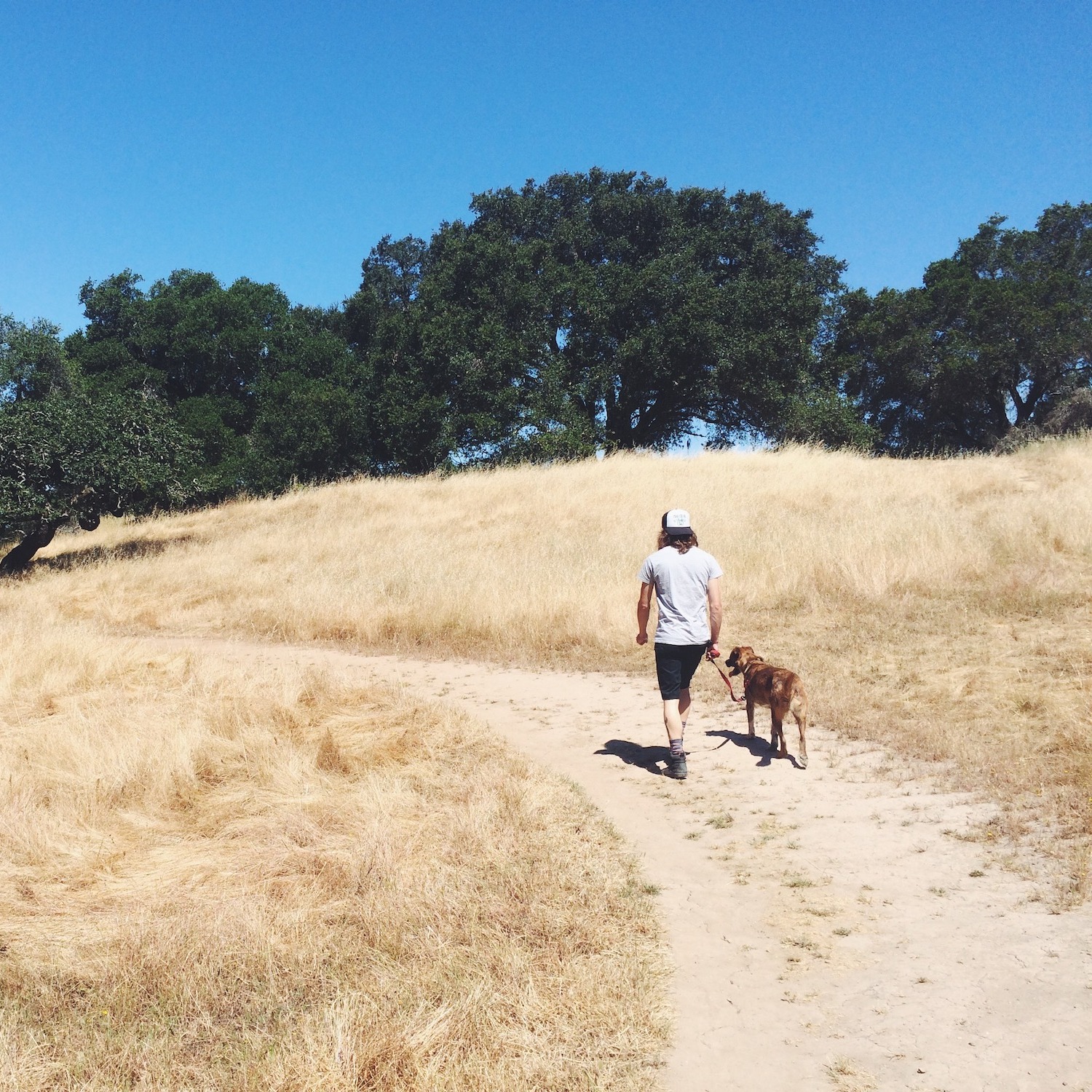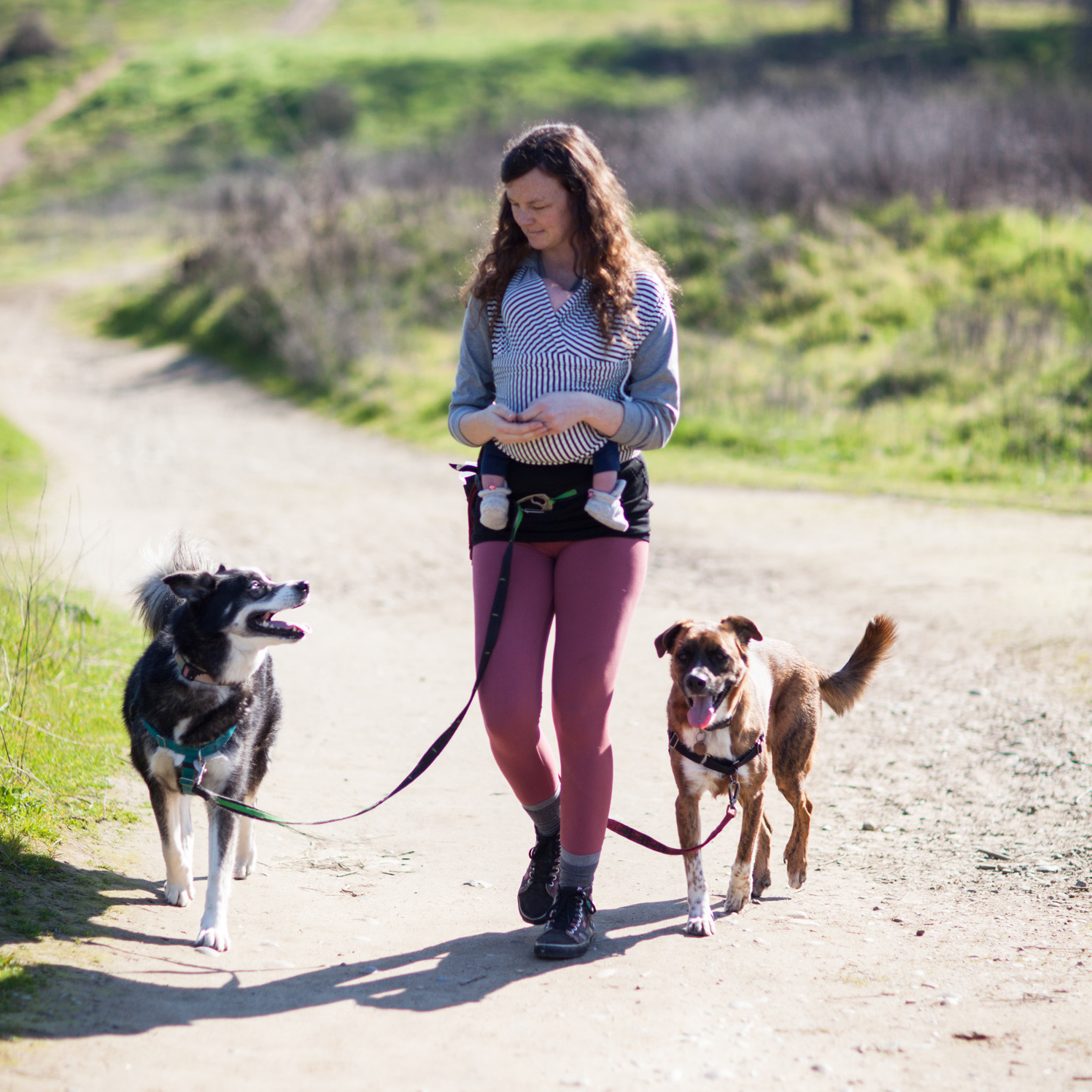Walking your dog should be a fun and enjoyable experience for both you and your dog. However, sometimes a leisurely stroll can turn into a frustrating nightmare. Why? Because many of us as dog owners make common mistakes that can turn a simple walk into a stressful event.
Here are 5 mistakes dog owners often make on walks and what you can do instead to make walking your dog a more pleasant experience.
Dogs do what works for them
“When she pulls on a walk, it can't feel comfortable! Why doesn’t she learn to stop pulling so hard?” To us it makes sense - dog pulls, pulling is uncomfortable, dog should stop pulling. What we’re failing to take into account in our dog walking is the other factors at play.
Can the motion of pulling on leash create uncomfortable pressure on a dog? Yes. But is the unpleasantness of that pulling greater than the desire to SMELL THAT THING and CHASE THAT SQUIRREL? Often, no.
If this is something you’re struggling with in your dog walking, we’ll go into how to teach calmer walking skills (without relying on discomfort!) in the next guide. (Hint: you always want to pay your dog at a higher value than whatever they're giving up/not doing.) But first, let’s get into some common mistakes I see pet owners, even professional dog walkers, make when walking dogs.
Your Dog's Plan
Stop! Don't read this long article. Instead, get everything you need to know, including all advice on Leash Manners, in a customizable step-by-step plan for your dog created by our community of certified trainers and nutritionists.
Here are the 5 most common dog walking mistakes and how you can think and act differently to avoid them:
Mistake # 1: Too much, too soon
Most people bring home their dog (or puppy), slap a leash on, and take their dog out into the world for a walk. They immediately are frustrated by their dog’s lack of leash manners, but fail to realize they’re competing for attention with thousands of fascinating smells, interesting people, other dogs, critters and birds, moving cars, bikes, scooters… The list goes on!
Try this
As with any skill, it’s critical to start in a low distraction environment, make sure your dog can understand and achieve the desired walking behavior, and then begin adding in all those distractions we expect our dogs to tune out. In other words, start with uninteresting walks for your dog and build to adding in more interesting smells and commotion. It can be a process to build comfortable walk skills. Patience is key.

This could be you enjoying a lovely walk with your dog nicely by your side! Start slow in low distraction environments for your dog walks and build to more interesting environments as your dog is successful.
Mistake # 2: Relying on punishment
When people think in terms of what they want their dog NOT to do, it’s easy to turn to punishment as the solution. For example, a lot of pet owners know we don't want our dogs pulling on leash. And that's what we focus on, reacting to what we don't want. But what about focusing on when we get the behavior we do want? In other words, rewarding our dogs for not pulling on leash.
Of course, punishment can have the temporary impact of reducing behavior if it’s timed correctly. Prong collars, choke chains, or even just “popping” (yanking on) the leash anytime the dog pulls. But there are a few reasons why this mistaken approach has proved over the years to be deeply counterproductive.
What does that actually mean?
First, and importantly, using punishment on your dog is unkind. Our dogs are family members - why rely on pain and fear to teach them when other options are available? Positive reinforcement has proved time and again to be the most effective and lasting training method for animals (and humans!).
Second, using punishment can be detrimental to our relationship with our dogs (who wants to hang out with someone who hurts them every time they get a little rowdy?). You want to be building your bond with your dog and have ever more trust between you, not drive your pup away with punishment and fear.
And third, we may be creating serious negative associations that can have a lasting impact on our dog's well-being since most people don’t have perfect timing, so often we are not punishing the behavior we think we are and confusing our dogs instead. Negativity creates the exact opposite of why you're walking your dog to begin with - good, happy exercise that's a joy for pets and pet parents alike!
Focus on what you want your dog to do instead
Instead, let’s change our mindset and think about what we DO want our dogs to do! Instead of how can I make my dog STOP PULLING, let’s ask, how can I ENCOURAGE my dog to walk at my pace? (Note: if you ever use a dog walking service, make certain they're committed to the same force-free methods - and check references!)
Try this
If you're currently using or have a prong collar, choke chain, or any type of aversive walking tool, please try walking your dog without it. Reach out to me or any other force-free trainer to help with the transition if needed.
Leash Manners
Interested in Leash Manners? Follow topics you're interested in to customize your dog’s step-by-step plan so it's most helpful and tailored to your dog when you're ready to get started.
Mistake # 3: Being inconsistent
If you're like most pet owners, one day you are determined to teach your dog better walking manners. Another you’re exhausted by the frustration that your dog doesn't seem to have retained anything from the previous day. You just want to get out the door and get your dog some exercise. One day you stop every time your dog pulls, another day you’re distracted and your dog yanks you to every single stop sign and fire hydrant for a good sniff. Some days you scold your dog for getting excited at the sight of other dogs, but other days you let your dog go say "hello."
Okay, tell me more...
Sound familiar? Pulling is reinforcing! It gets your dog where he/she wants to go faster - so woohoo, mission accomplished. Pulling is so much more fun and rewarding from a dog perspective! If sometimes we let leash pulling behavior continue to be reinforced (as it is naturally) and other times we try and reinforce the version of walking we’d like to see, we’re not going to see much change in our dog's behavior.
Thinking of our walks as training opportunities first and exercise second will help us become more consistent in our behavior, so we can begin working on our dog’s behavior.
Mistake # 4: Being too “human” and not “dog” enough
When we think about our dog’s behavior from a perspective of human logic, it can be really frustrating and hard to understand. Dog walking is supposed to be exercise, why do we have to stop every five steps to sniff? Again, a change in perspective can help us enjoy walking with our pets more. Instead of exercise, let’s think of our dog walk as an opportunity for enrichment and mental stimulation.
Give me an example
Training on a walk is a great mental workout for our pets. So is sniffing! Making your walk a time when training and sniffing happily coexist can be both stimulating and calming for your dog. At least once a week, plan a sniffari walk with plenty of sensory enrichment opportunities along the way.
Why it matters
Sometimes giving our dogs a chance to slow down is actually helpful to walk training. We're encouraging our dogs to explore things they're interested in and being better partners to them instead of insisting on a walk that's too brisk and rigid to stop and smell the flowers (or, you know, the scent of previous animals who left their mark).
Try this
Once per week plan to take your dog on a walk where you let your pup sniff as much as he or she wants. No pulling your dog away or telling your dog to "come on." Just let your pup sniff to his/her heart's content.
Your Dog's Plan
Stop! Don't read this long article. Instead, get everything you need to know, including all advice on Leash Manners, in a customizable step-by-step plan for your dog created by our community of certified trainers and nutritionists.
Mistake # 5: Not using distance to your advantage
Whether your dog is fearful, reactive, or just an excitable goofball, there are going to be things in the environment (LOTS of things) that provoke extra pulling or other behaviors we don’t like to see on our walks (spinning, lunging, barking, lying down, etc).
Distance makes safety, fun, and learning possible
Your dog can learn good walk behaviors only when his/her walks are safe and fun. Many pet owners (or even a "pro" dog walker) can miss the opportunity to take advantage of distance as a simple tool to buy time and space -- and importantly, safety -- to control a situation. If your dog is frightened or over threshold, all their energies are consumed by emotions so it's up to you to either anticipate a potential problem or remove your dog from the area quickly, offer your dog plenty of treats, and start fresh another day.
Being aware of our dogs' thresholds - the distance at which they can perceive these things without totally losing it - is incredibly important. For example, walking dogs on a narrow street or city sidewalks where they are expected to pass other dogs in extremely close proximity can be really challenging for dogs all over the behavioral spectrum!
Try this
Be thoughtful about where and when you walk your dog to navigate common obstacles in a way that sets your dog up for success. Is your dog not a fan of other dogs? Plan to walk during less busy times and on routes with fewer dogs.
Nobody knows your dog, your area, and what works better than you, so pick walk routes that suit your dog.
And if you're exploring a new site you've never walked before, check it out in advance if you can, or practice what we call "swivel-head walking" where you see and anticipate any challenge your dog might meet. Actually, swivel-head dog walking is a good idea anytime, anywhere for pet owners who aren't confident their dog will greet anything that comes their way with a totally cool, laid-back attitude.
Walking
Need more advice? Browse all guides in the Walking Channel on topics like Leash Manners - created by our community of certified experts for you and your dog.
Next up in the Walking Channel on Dogly
Now that you know the big 5 dog walking mistakes other dog owners make and how to avoid them with YOUR dog, celebrate with a fun walk! And if you're ready to start teaching your dog the basics of loose leash walking, continue on to the next guide here.
Or, continue with all of the step-by-step guides in the Walking Channel here on Dogly.
If you ever need more personalized training help, please reach out!

